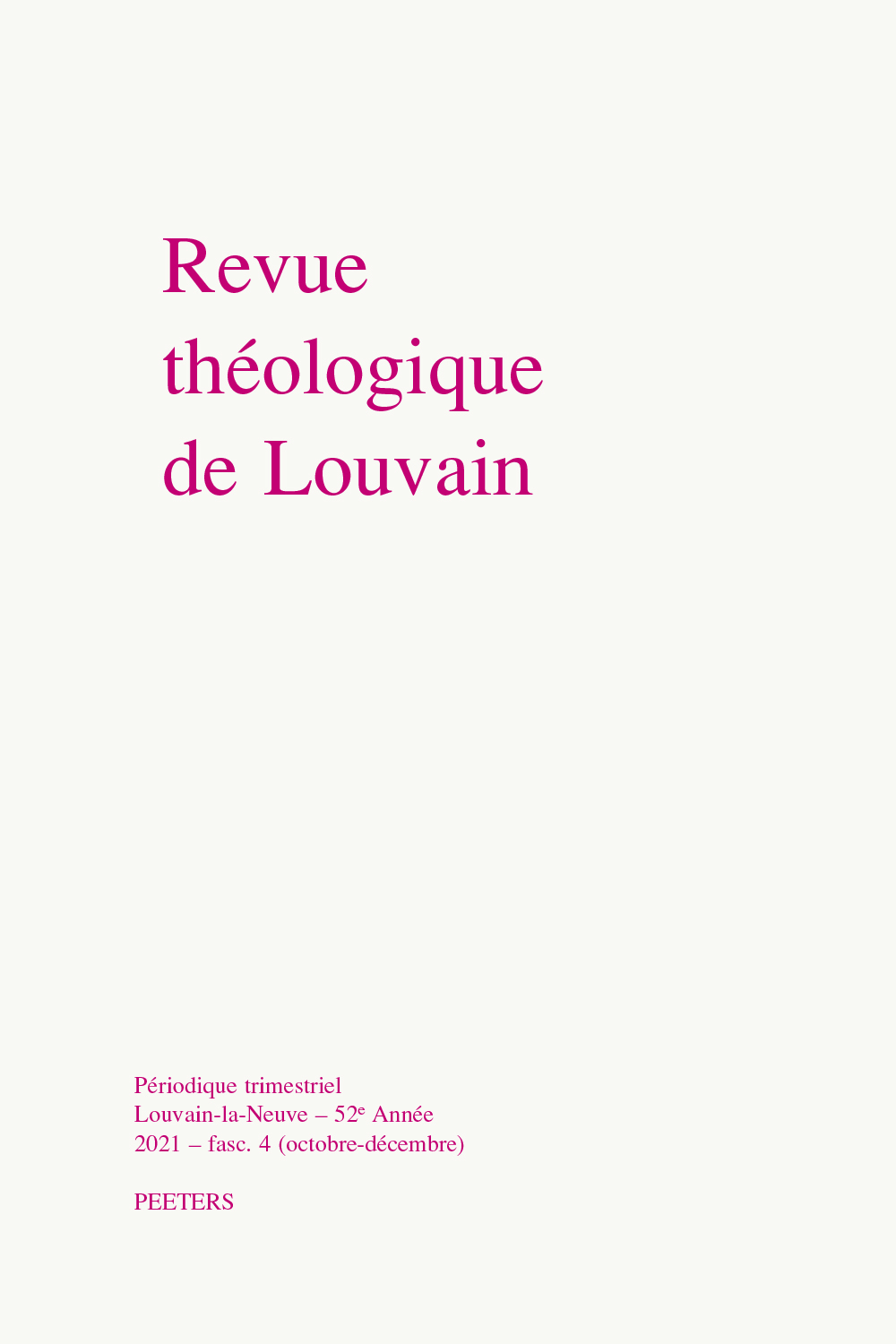 previous article in this issue previous article in this issue | next article in this issue  |

Preview first page |
Document Details : Title: La déclaration Nostra aetate Subtitle: Les enjeux d'une réception actualisée Author(s): YOUNÈS, Michel Journal: Revue Théologique de Louvain Volume: 47 Issue: 2 Date: 2016 Pages: 218-233 DOI: 10.2143/RTL.47.2.3157173 Abstract : La Déclaration Nostra aetate du concile Vatican II constitue un tournant dans le regard que l’Église catholique pose sur ses rapports aux autres traditions religieuses. Portée par un élan pastoral, ecclésiologique et théologique inhérent au Concile lui-même, la Déclaration institutionnalise une approche positive vis-à-vis de celui qui ne partage pas la même foi et rend possible une diffusion d’un état d’esprit habité par l’ouverture et le dialogue. Au cœur de la Déclaration, deux religions occupent, à des degrés différents, une place centrale. Pour comprendre cette importance, il convient de revenir sur l’histoire rédactionnelle. Quel rôle a joué le contexte occidental (européen), surtout dans le rapport au judaïsme, mais aussi quelle place ont tenu les évêques orientaux (moyen-orientaux) concernant le paragraphe sur l’islam? Cinquante ans après le concile, comment s’exprime l’accueil de cette Déclaration tant en Orient qu’en Occident? Malgré son caractère général et un peu superficiel compte tenu de l’étendue du sujet, il s’agit de mesurer l’impact qu’a eu la Déclaration, particulièrement vis-à-vis du rapport au dialogue islamo-chrétien. Dans un contexte marqué par des mutations profondes, dirons-nous dans les mêmes termes le contenu de Nostra aetate, notamment en lien avec l’islam tel qu’on le voit se développer en Occident et dans le monde? The Second Vatican declaration Nostra Aetate represents a significant shift in the way the Catholic Church sees its relationships with other religious traditions. In line with the pastoral, ecclesiological and theological momentum inherent in the Council itself, the declaration institutionalizes a positive approach toward those who do not share the same faith. It fosters a state of mind rooted in openness and dialogue. To differing degrees, there are two main religions at the heart of the declaration. To understand this, it is useful to come back to the declaration’s redactional history. What role did the Western (European) context play, especially in terms of Judaism? What was the role of the Oriental bishops (Middle-East) concerning the paragraph on Islam? Fifty years after the Council, how is the declaration received both in the oriental and the western context? Despite its general and somewhat superficial nature – given the vast and complex topic at hand –, the point is to assess the impact the declaration has had, particularly with regard to the dialogue between Islam and Christianity. In a context marked by deep transformations, will we express the content of Nostra Aetate in the same terms, notably as related to Islam as we see it evolving in the West and in the world? |
|


